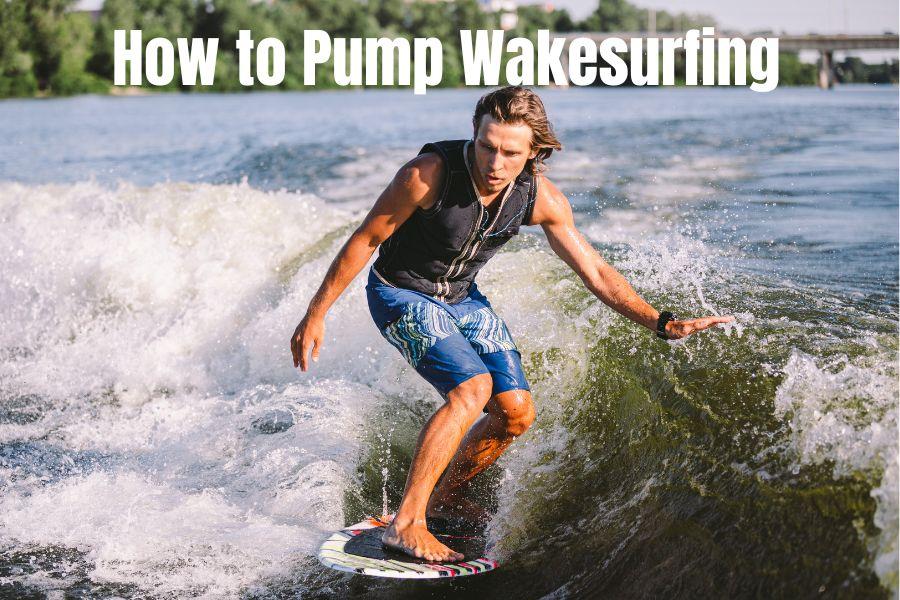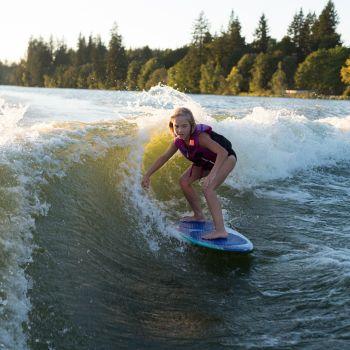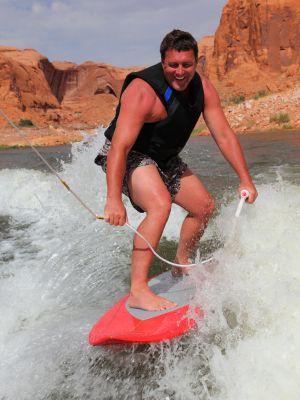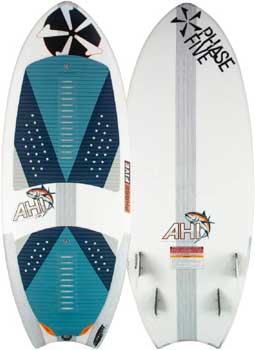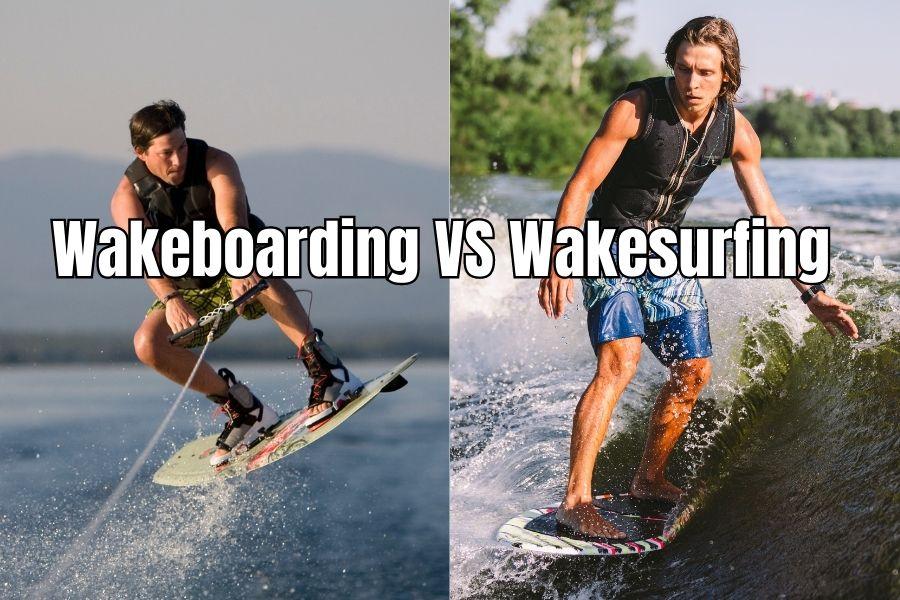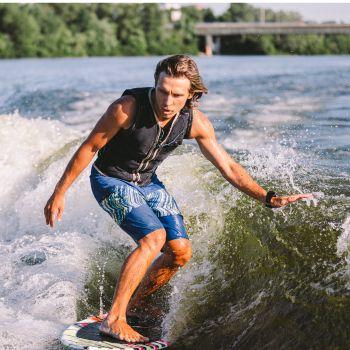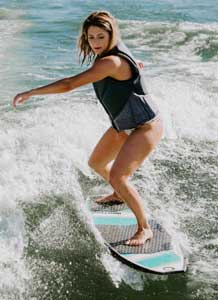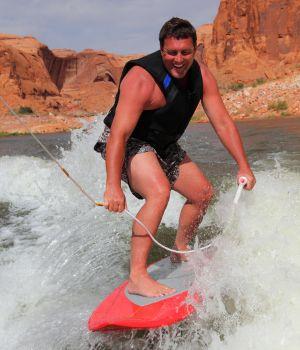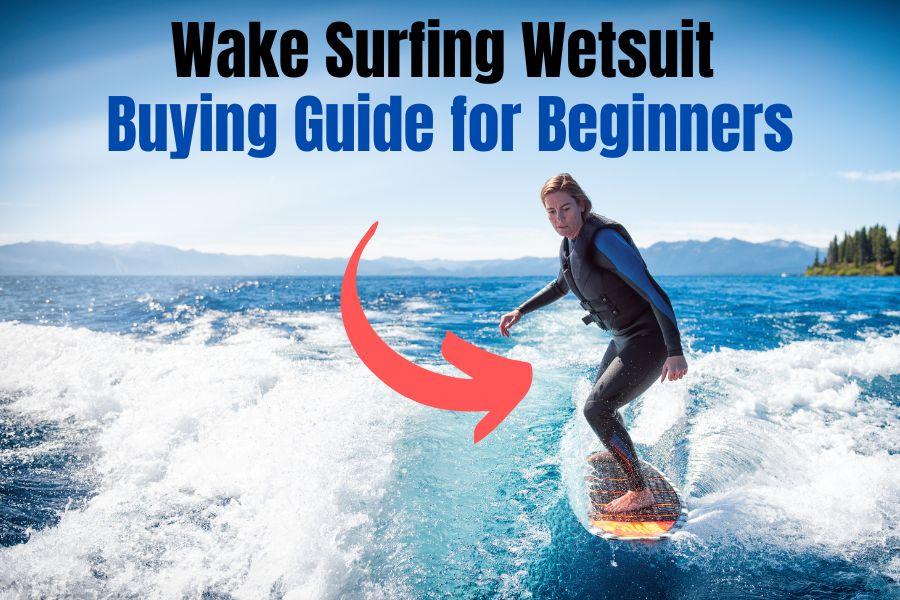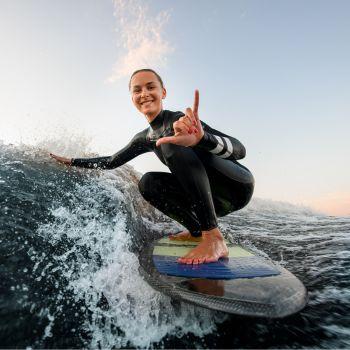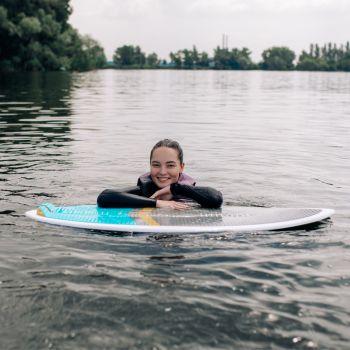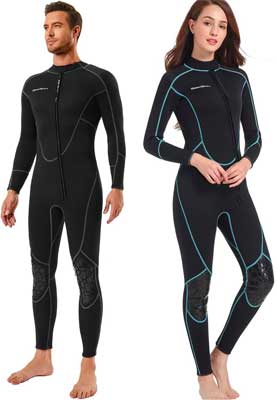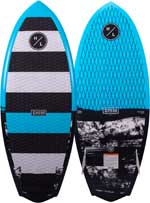When you wakesurf behind a boat, how do you keep moving forward and avoid falling behind the wake? The essential skill every wakesurfer should master is pumping, a technique used to generate speed and maintain momentum without being towed.
Below, we show you step by step how to “pump” while wakesurfing, so you can surf for longer without holding onto a rope.
What is the Pumping Technique?
Pumping combines shifting your body weight and using the momentum of the wave to propel your board forward. For example, when you push down on the wakesurf board with your front foot, you can accelerate and create speed, using the wave’s energy.
In other words, you can create momentum all on your own without having to rely on the tow rope to pull you.
Step-by-Step Guide to Pumping:
Follow these steps to perfect your pumping technique and maximize your wakesurfing experience:
- Position Yourself Correctly:
Start by positioning yourself on the sweet spot of the wake, where the wave’s energy is strongest. Your feet should be shoulder-width apart, with your front foot slightly angled towards the boat and your back foot parallel to the board’s tail.
- Bend Your Knees and Get Low:
Maintain a low and athletic stance with your knees bent. This gives you more stability and control while you pump the board.
- Generate Momentum:
As you approach the peak of the wave, crouch down and apply pressure on the board using your back foot. As the wave begins to carry you forward, shift your weight to your front foot to generate momentum.
- Shift Your Weight:
Once you feel the wave’s energy pushing you, start shifting your weight from your front foot to your back foot while extending your legs. This movement transfers your weight and propels the wakesurfer forward in the water.
- Use Your Arms for Balance:
As you pump, use your arms to help maintain balance and control. Keep them slightly extended and use them as counterweights to stay stable.
- Repeat the Motion:
Continue the pumping motion, shifting your weight from front to back foot, and back again, to maintain speed and momentum. (Like the rhythm of pumping on a skateboard or a swing.)
- Read the Wave:
Adapt your pumping technique to the wave’s size and shape. Adjust the timing and intensity of your pumps to match the wave’s rhythm and maximize your speed.
FAQ for How to Pump Wakesurfing:
Q: Is pumping only suitable for advanced wakesurfers?
A: Not at all! Pumping is a fundamental skill for all wakesurfers – beginners or advanced. Once you feel comfortable riding the wake without a rop,e you can start learning to pump.
Q: How long does it take to master the pumping technique?
A: The time it takes to master pumping varies from person to person. With consistent practice and focus, most riders can start to feel comfortable with the technique within a few sessions.
Q: Can I pump on any type of wakesurf board?
A: Pumping is possible on most wakesurf boards, but some board designs may perform better than others. Boards with a more pronounced rocker and buoyant tails tend to respond well to pumping.
Q: Are there any safety precautions I should take while practicing pumping?
A: Always wear a properly fitted life jacket while wakesurfing, and ensure there is a spotter on the boat to keep an eye on you. Practice pumping in a clear area away from other boats or obstacles.
Summary:
Pumping allows you to generate speed and maintain momentum without relying solely on the boat’s pull. Shift your weight and take advantage of the wave’s push, and you can propel yourself forward and enjoy longer rides on the wake.
Remember to maintain an athletic stance, use your arms for balance, and read the wave to adapt your pumping technique.

